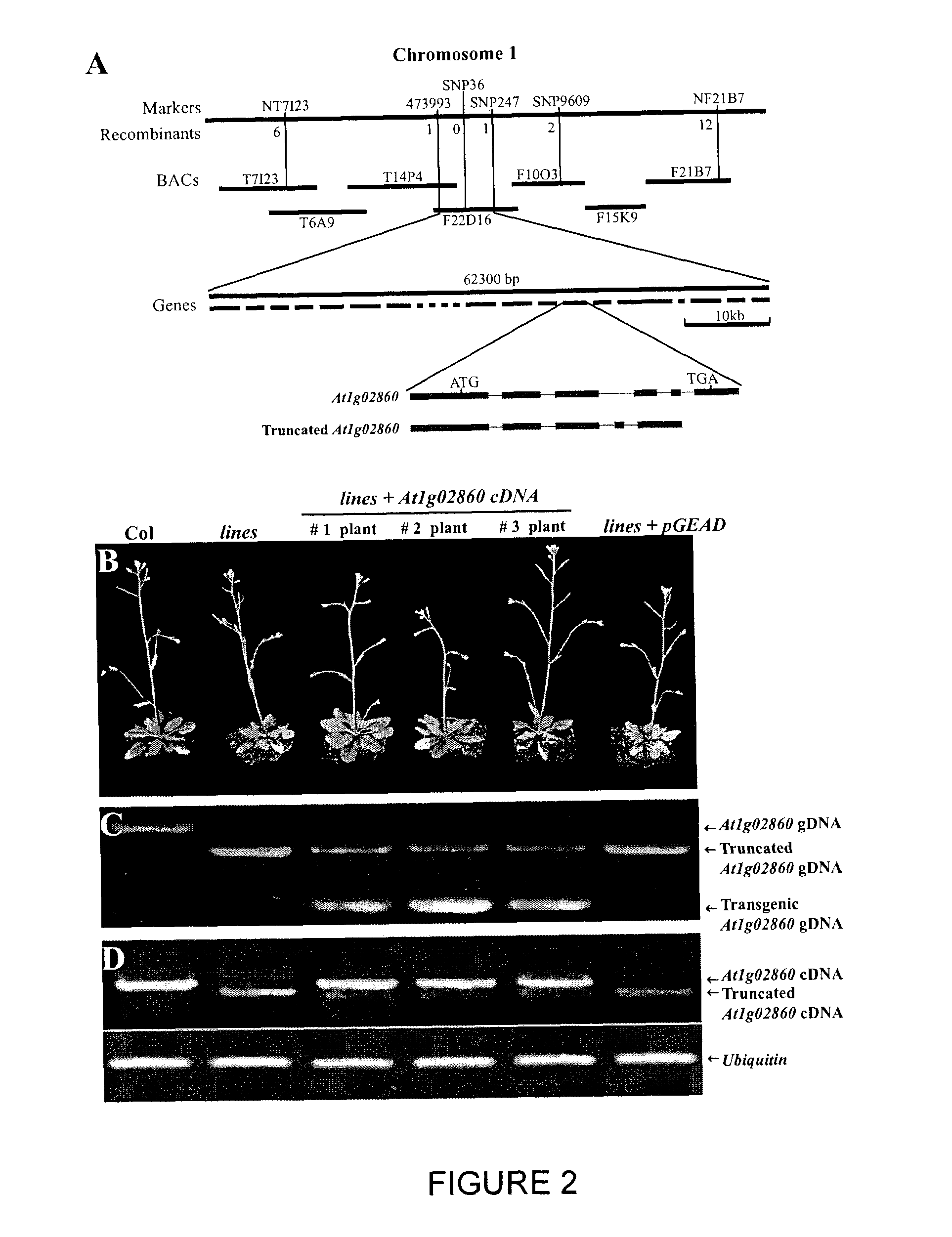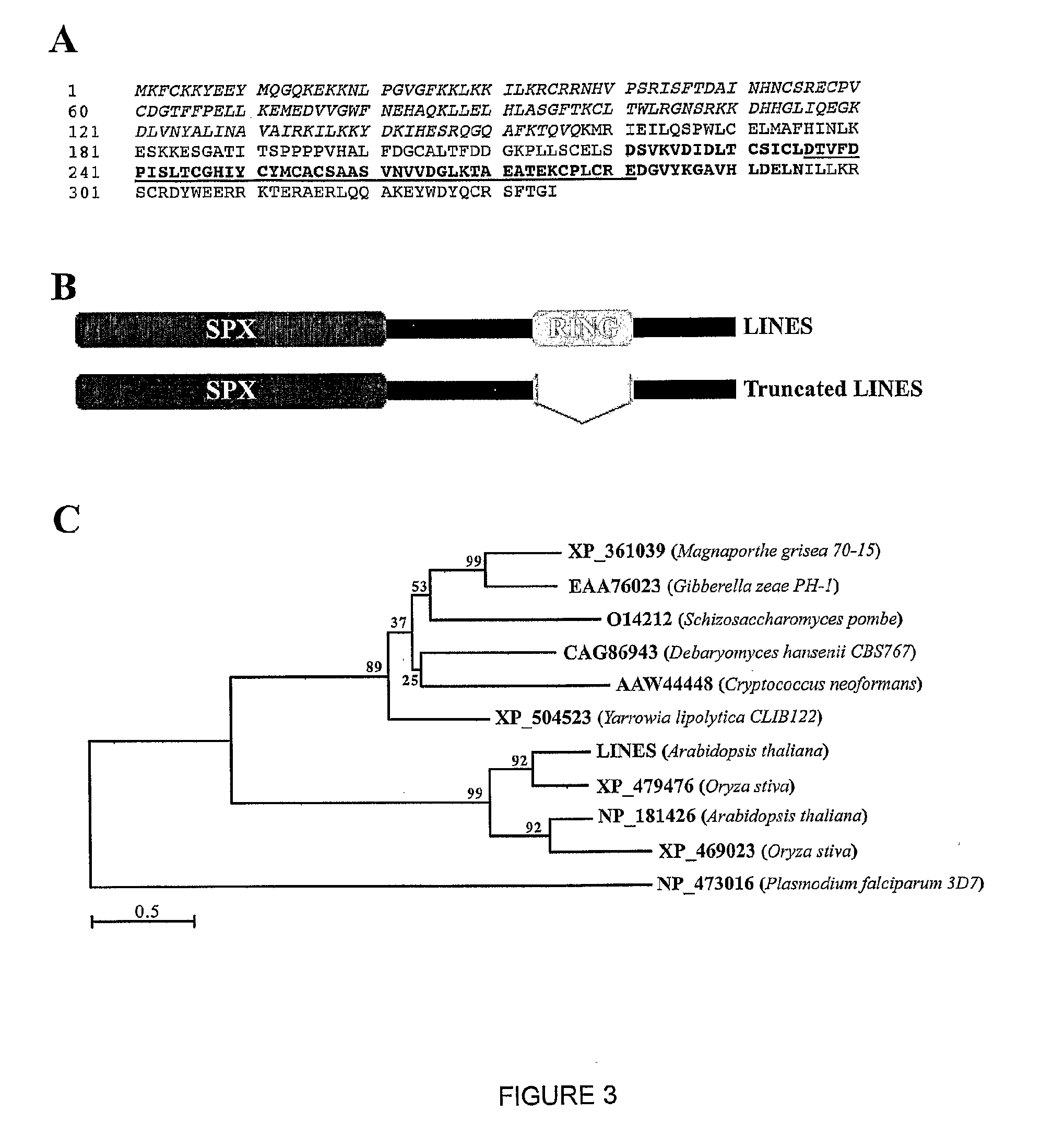Nitrogen limitation adaptability gene and protein and modulation thereof
a technology of adaptability gene and nitrogen limitation, which is applied in the field of nitrogen limitation adaptability gene and protein and modulation thereof, can solve the problems of increasing the cost of this input to the farmer, increasing the cost of this input to the environment, and having negative side effects, so as to increase or decrease the resistance to an herbicide, increase or decrease the requirement for light, water, nitrogen or trace elements, and increase or decrease the effect of anthocyanin pigmentation
- Summary
- Abstract
- Description
- Claims
- Application Information
AI Technical Summary
Benefits of technology
Problems solved by technology
Method used
Image
Examples
example 1
Plant Growth Conditions and Isolation of the Lines Mutant
[0366]A collection of Arabidopsis homozygous T-DNA insertion mutant lines (in Columbia background) were identified from ABRC seed stocks. In a growth room with controlled environmental conditions (23° C. day / 18° C. night, white fluorescent illumination of 150 μmol / m2·s, 16 hr light / 8 hr dark, and 75% relative humidity), these T-DNA lines were grown in the nutrient-free soil LB2 (SunGro Horticulture Canada Ltd. BC. Canada) supplied with 3 or 10 mM potassium nitrate in the nutrient solution (10 mM KH2PO4 pH5.6, 2 mM MgSO4, 1 mM CaCl2, 0.1 mM Fe-EDTA, 50 μM H3BO4, 12 μM MnSO4, 1 μM ZnCl2, 1 μM CuSO4, 0.2 μM Na2MoO4) once a week for four weeks. Based on the low nitrate induced early senescence phenotype, the lines mutant was isolated from these T-DNA lines.
Biochemical Analysis
[0367]The 5th-8th rosette leaves from lines and Col plants grown in LB2 soil with 3 mM nitrate for different days were harvested, frozen in liquid nitrogen, ...
PUM
| Property | Measurement | Unit |
|---|---|---|
| Tm | aaaaa | aaaaa |
| temperature | aaaaa | aaaaa |
| pH | aaaaa | aaaaa |
Abstract
Description
Claims
Application Information
 Login to View More
Login to View More - R&D
- Intellectual Property
- Life Sciences
- Materials
- Tech Scout
- Unparalleled Data Quality
- Higher Quality Content
- 60% Fewer Hallucinations
Browse by: Latest US Patents, China's latest patents, Technical Efficacy Thesaurus, Application Domain, Technology Topic, Popular Technical Reports.
© 2025 PatSnap. All rights reserved.Legal|Privacy policy|Modern Slavery Act Transparency Statement|Sitemap|About US| Contact US: help@patsnap.com



